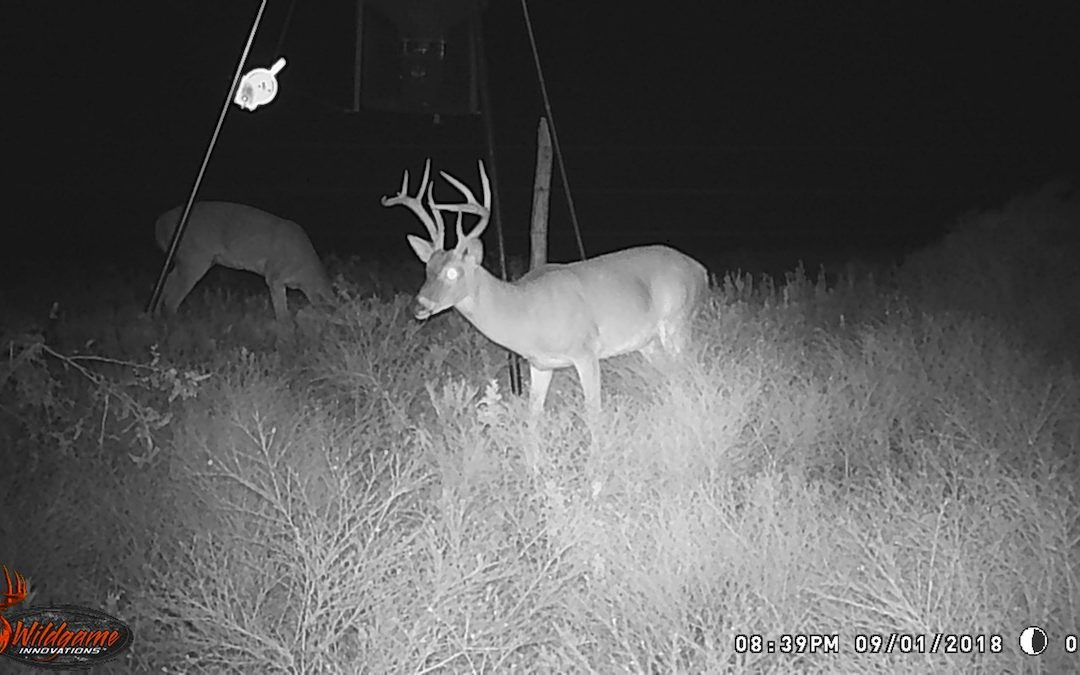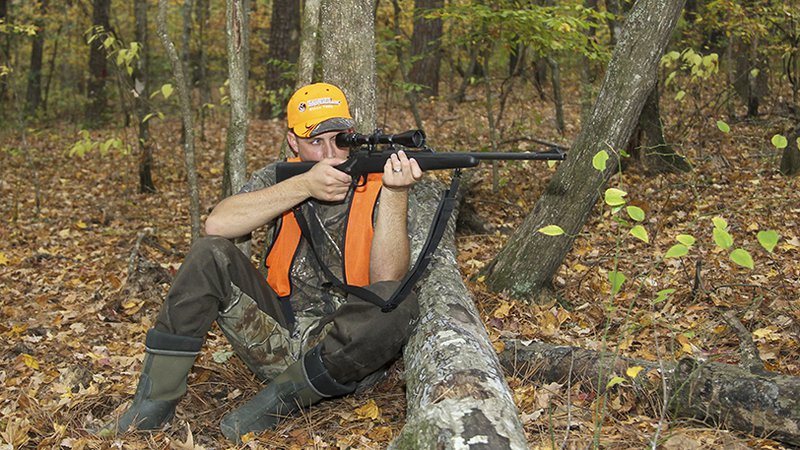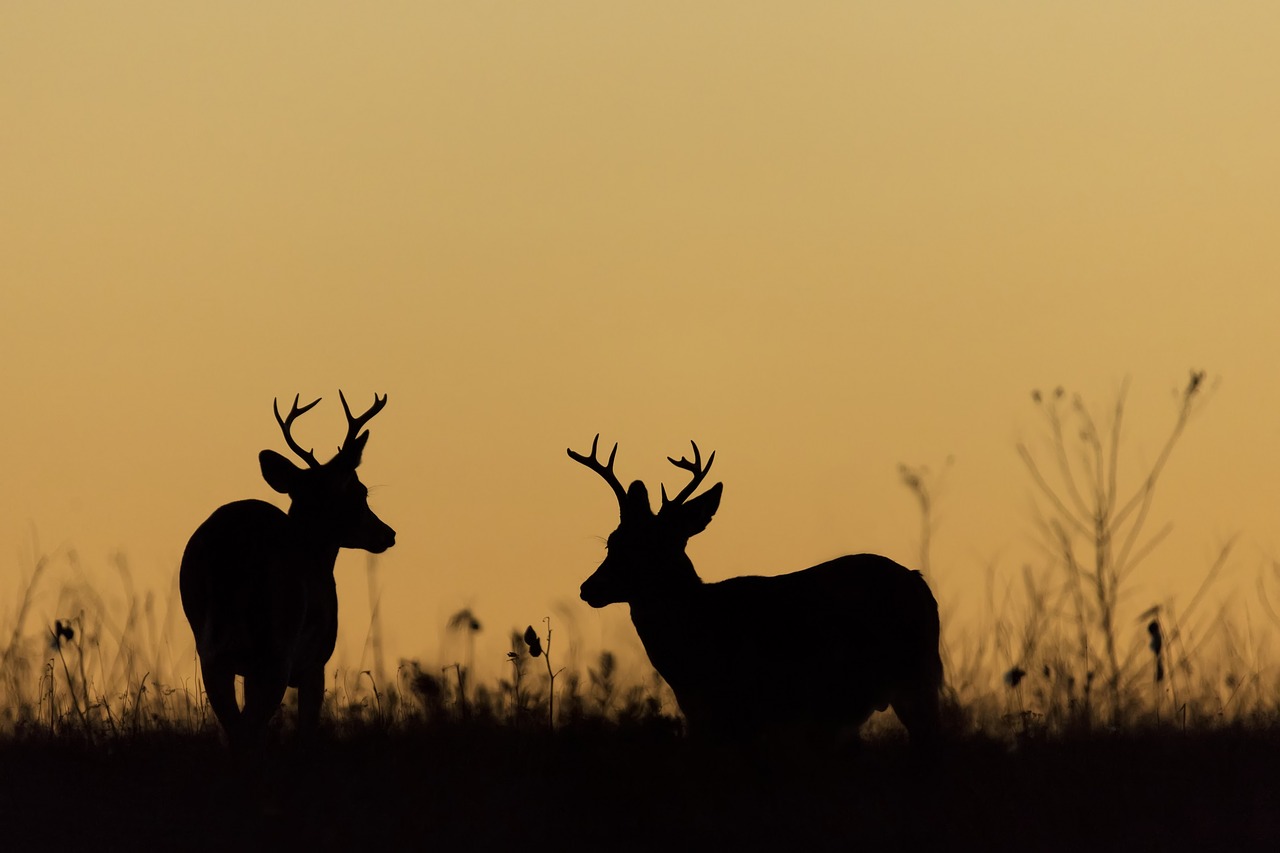I have had many conversations with game biologists, game wardens, “deer farmers,” and rancher/landowners concerning antlers. Most agree with me, except TPWD game biologists concerning the antler restrictions in place on whitetail bucks in certain Texas counties.
As you know, taking bucks in those counties with less than 13-inch inside spread, or a single non-branched antler on one side is illegal. TPWD declares that the gene of high-racked or “basket bucks” will eventually be bred out of the deer herd. Many of my acquaintances as mentioned above and I disagree.
Once genes are present they will remain, even if latent in some cases. Therefore, if some of those bucks which have high, narrow antler growth, but do not meet the 13-inch minimum criteria, will spread those genes as long as they breed; the same with small “basket racks” which used to be very prevalent in the Texas Hill Country and still are on many ranches.
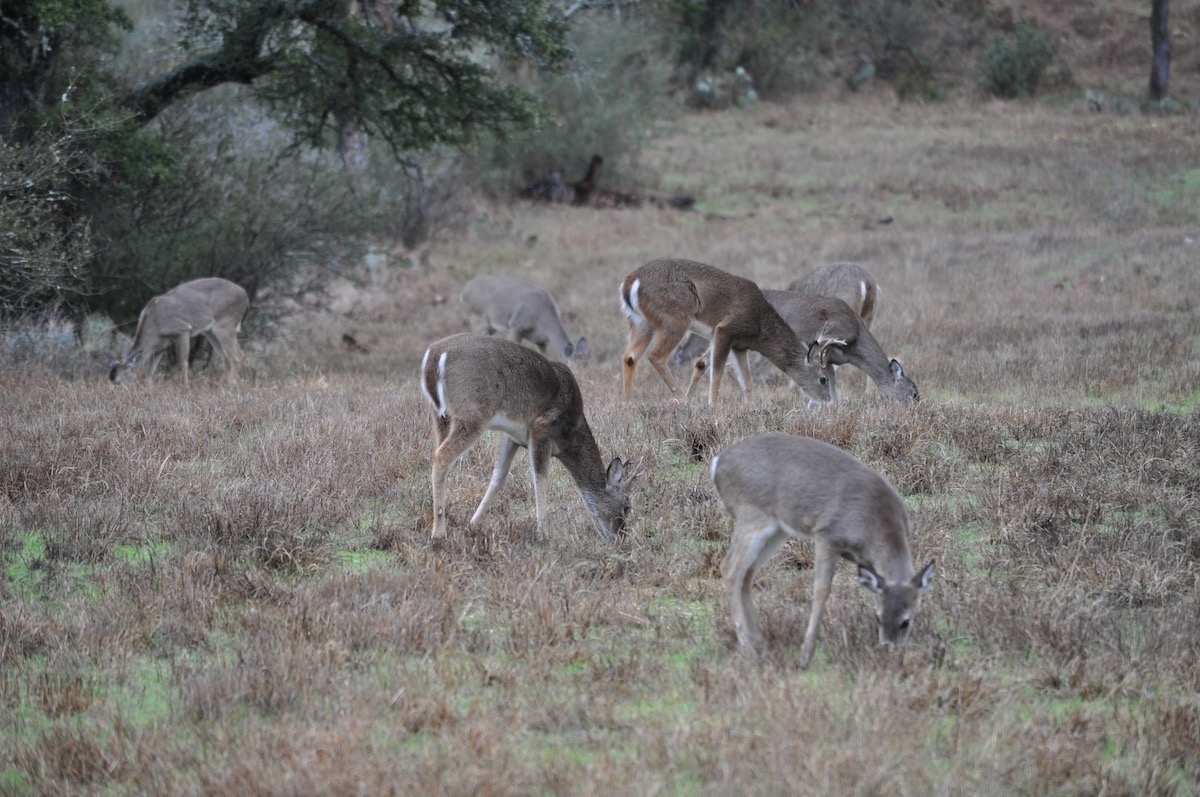
Antler restriction has allowed young bucks such as these the opportunity to grow older and produce bigger antlers and bodies.
I have hunted on many Texas ranches and in several other states, and know a bit of what I speak. Hill Country ranchers and hunters will tell you that shooting off inferior bucks, like those with little “basket racks” have greatly improved deer herds in regard to big bucks taken.
I will agree that young deer, as you explained very well in your previous answer on aging deer, with those smaller racks should not be taken form the herd, and proper management techniques should be observed, but not removing older bucks with large high antlers less than 13-inch inside spread is not one of them. Of course, one cannot know which does carry such genes.
I would appreciate your observations/comments on this subject.
A: Stanley, you bring up some most interesting points, including questions that I have dealt with for a good many years as a wildlife biologist, landowner and hunter in one of the Texas counties where we have had antler restrictions for close to, or more than twenty years.
Essentially antler restrictions were established in numerous Texas counties, as they were in other counties and townships in other states, to allow young, branch-antlered bucks to get into the older age classes, meaning in many areas to survive to be two to three years old and older. Some of these same areas do allow the taking of “slick” spike bucks. But to be a legal buck, one side of the rack needs to have four or more points or tines, including the main beam, and the inside antler beam spread had to be 13 or more inches.
On property I own and manage which has been in our family since the 1850’s, we do not shoot spikes, rather giving them, too, the chance to grow older and hopefully produce bigger more acceptable antlers, and bigger bodies that produce more venison for the table.
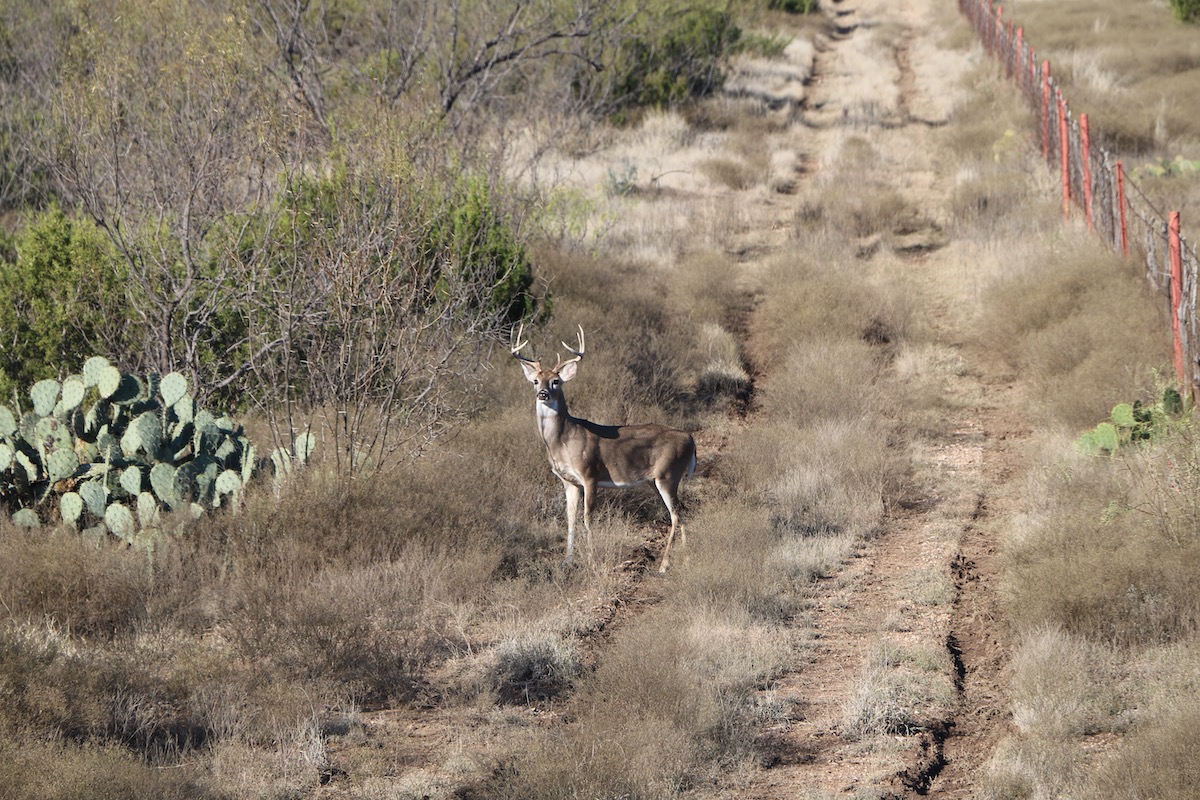
One of the side effects of antler restriction is to cause hunters to truly look at a buck before pulling the trigger or releasing an arrow.
In the most recent Q&A I responded to something similar to your question. Research conducted using DNA, once again in Texas, it has essentially been demonstrated that culling what many might consider “inferior” antlered bucks has little effect on the overall antler development.
To me, culling or the taking of management buck, simply means removing deer to keep the population in check with what the habitat can support in the worst of times. The recent research conducted on the Comanche Ranch in South Texas has also shown bucks do not necessarily breed true to their antler style and size, albeit, some seemingly do. Thus, a narrow-spread antlered buck may well produce male offsprings that have wide antlers realizing the doe having at least 50-percent influence on antler style.
In a confined, penned deer situation where breeders line-breed, sometimes genes for antler style can be concentrated. In a real world, open areas, such things rarely if ever happen unless perhaps the habitat is very restricted, as is deer movement.
In some of the counties you mention in Texas with antler restrictions, quite a few years ago (like back in the early 1980’s) many buck fawns were ear-tagged. Approximately half, if memory serves me right, of the tagged bucks as yearling, 12 to 18-month, old bucks moved great distances, as in 10 or more miles from where they were born to establish themselves as adult and breeding bucks. This is likely nature’s way of insuring there will not be extensive in-breeding within any specific deer herd. Too, research conducted years ago showed whitetail deer have tremendous genetic variability, so there is not much of a chance to produce any great number of only narrow racked bucks even where such bucks have been “protected.”
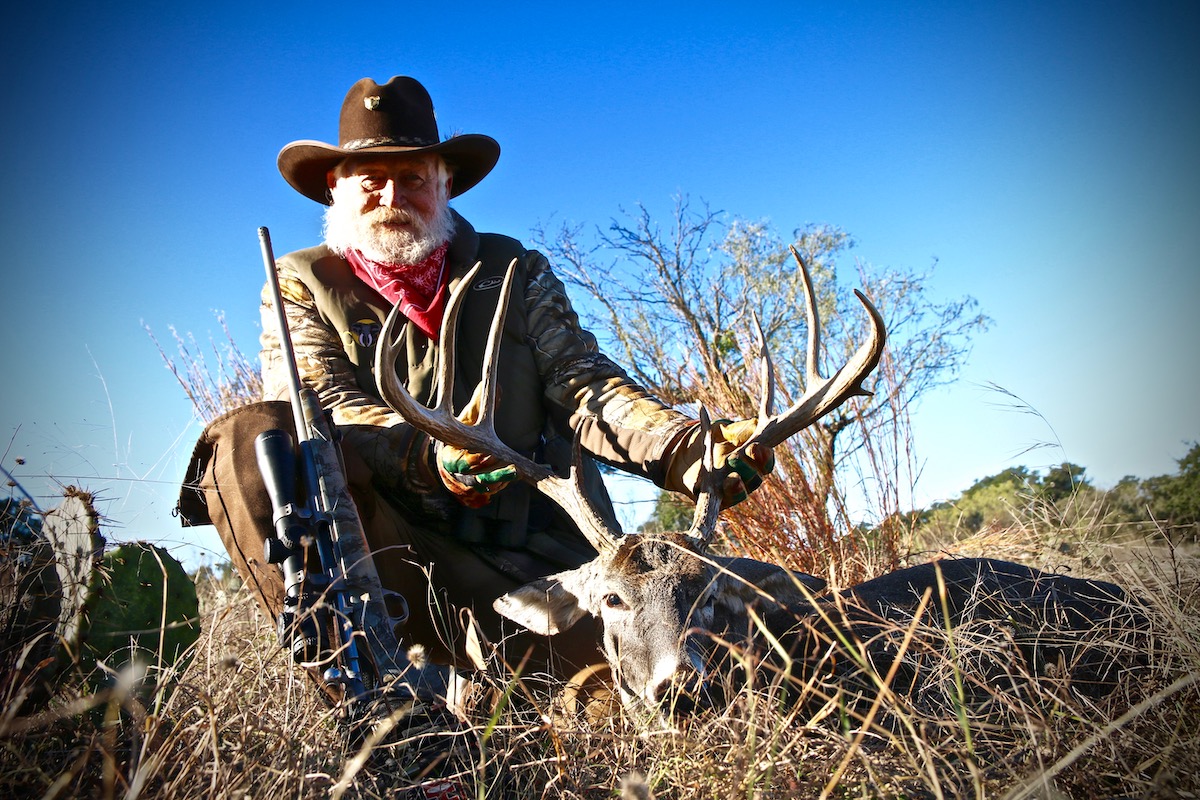
A wide spread buck produced in an area where antler restrictions were in place for several years.
Since the inception of antler restrictions in several of the Texas counties, the average size (in terms of number of points, beam length and spread) of racks and bodies has increased. Mostly that is because the bucks are being given an opportunity to live longer than yearlings. But, too, antler restrictions tend to lead to better management of the wildlife habitat, thus creating more forage for deer on a daily basis.
On my personal property and surrounding land we have seen a substantial increase in antlers, including spreads, since the antler restrictions were put in place. On my property, too, there lives a mature 8-point buck with massive, long-tined antlers, but with only about an 11-inch inside spread. When you see his profile, he looks truly impressive for a Gulf Coast Texas whitetail. Then he turns his head to look your way or away, you see the narrow spread. This buck is likely either 7 or 8 years old this year. I know he is likely breeding does, at least I have seen him chasing. But thus far, we have not seen another buck that looks like him relative to narrow spread. However, we do see mature bucks with 14- to 16-inch inside spreads, albeit mostly after dark.
As a hunter, landowner and wildlife biologist, I like the results of antler restrictions. It certainly has made sitting in my ground blind on my personal property a whole lot more interesting!

As a wildlife biologist, Larry Weishuhn established quality wildlife management programs on approximately 12,000,000 across North America with emphasis on habitat and animal populations. As a writer, he has served on staff on numerous publications in hunting, shooting and wildlife management and has long been involved with the highest quality outdoor television productions.
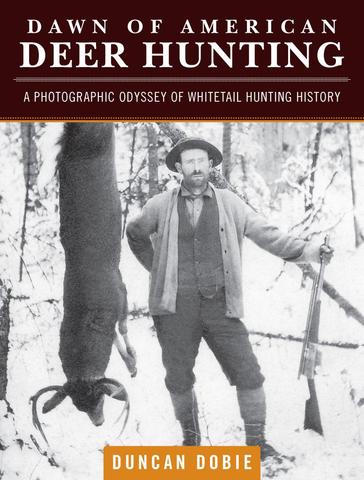 Take a glimpse back in time with the outstanding collection of photographs and historical information from the late 1800s to the mid-1900s that author Duncan Dobie has included inside Dawn of American Deer Hunting. You’ll see the classic rifles hunters used, how they traveled to the remote deer camps, what kind of shelters they stayed in and more fascinating pieces of hunting history from the legendary deer regions around America. Buy Now
Take a glimpse back in time with the outstanding collection of photographs and historical information from the late 1800s to the mid-1900s that author Duncan Dobie has included inside Dawn of American Deer Hunting. You’ll see the classic rifles hunters used, how they traveled to the remote deer camps, what kind of shelters they stayed in and more fascinating pieces of hunting history from the legendary deer regions around America. Buy Now 
